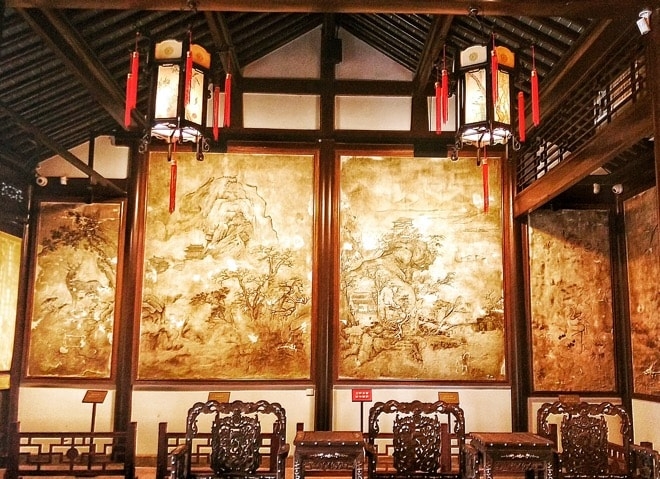Tangzijie, a place notorious for selling second-hand (stolen) bikes in Nanjing has a chance to clear its name. After half a century of preservation, 24 original murals from the Taiping Heavenly Kingdom Era (1850-1864) were unveiled on Tangzijie last Wednesday.
These colourful wall paintings were rediscovered on the walls of 108 Tangzijie in 1952, and were later confirmed by historians to be artworks from the short-lived rebellion state; “Heavenly Kingdom of Peace” (太平天国).
In 1850, a Chinese Christian convert, Hong Xiuquan, who believed himself to be the younger brother of Jesus Christ proclaimed himself leader of a new dynasty, the Taiping Heavenly Kingdom, declaring Nanjing the Heavenly Capital.
He and his followers marched against the ruling Qing dynasty, gathering huge support as they went. The ensuing civil war lasted fourteen years; around twenty million people lost their lives in what was thought to be one of the bloodiest civil wars in human history and the largest conflict of the nineteenth century. Historians believe it shaped modern China in the same way as the First World War shaped modern Europe.
However, when the rebellion failed in 1864, most objects of art were destroyed by Qing soldiers. Only a few survive today, with half of them being sent overseas and only a hundred or so remaining within the nation, the majority in Nanjing.
“Had it not been for the ashes that covered them, we might never see these national treasures”, said Zhang Tiebao, a longtime researcher on Taiping Heavenly Kingdom history before recounting an amusing story of a former houseguest who suspected the red colours on the murals were blood and was paranoid to the extent that he covered everything with limestone ash, which unintentionally protected the murals from complete deterioration.
24 meticulously painted murals went on display last week in the 4,100 square metre exhibition space, along with other artefacts, such as brick sculptures, woodcarvings and screens from the Heavenly Kingdom era. One of the major highlights is an intricately detailed wall painting of the war between Taiping rebellion soldiers and those of the Qing army along the Yangtze River.
All the cultural commingling on view shows the unique art style of that time; a mixture of exquisiteness from works by men-of-letters and the earthiness of folk art. Visitors also will see an ancient Chinese version of Heaven on the wall, which is made up of cranes resting peacefully under peach trees with pavilions in the background. Interestingly, no human figures were presented in these murals because of Hong’s strict Christian doctrine of no idol worship.
“Wall paintings were extremely popular during that time”, said Zhang, pointing out that most of the so-called Heavenly Kings came from a farmer background and grew up with ancestral temple murals in the countryside. In the Kingdom’s prime, almost all houses were painted and Hong even set up a specialised bureau in charge of mural paintings on what is today Hongwu Lu.
The house on Tangzijie was listed as a national cultural heritage protection unit in 1988 but it has taken 64 years for the murals inside it to be readied for public exhibition. Their preservation in southern China is extremely complex because of the damp climate which can cause the murals to peel or become mouldy. Historians in Nanjing have tried various ways to repair them but the process proceeded very slowly. Now, with the help of professionals from the Shanxi Archeological institute, the treasures finally faced their public this year on 18th May, International Museum Day, continuing to capture the nation’s imagination.
Entrance is free until the end of this month with ID card. Find the Taiping Heavenly Kingdom Mural Arts Center Gallery (太平天国壁画艺术馆) at 108 Tangzijie (堂子街108号). Opening times are 8.30am until 4.30pm.









